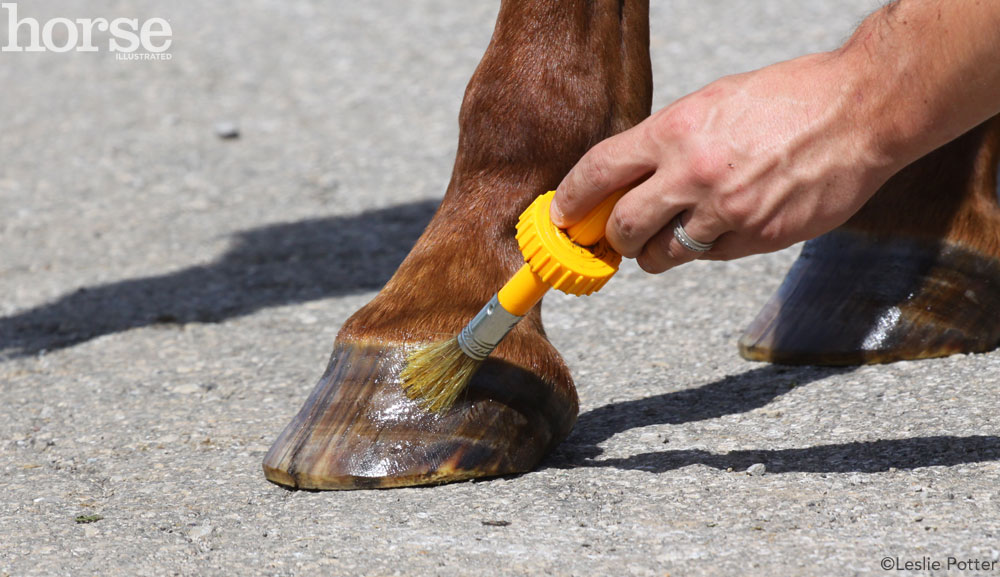
Q: What is the difference between hoof hardener and hoof oil? Depending on what climate you live in and what season it is (dry or humid; spring, summer, fall, winter, etc) when should I use hoof hardener and/or oil? Is it possible to use too much hoof hardener and/or oil? Where is the most beneficial place to apply hoof hardener and/or hoof oil? Like the wall or sole frog area.
This question was answered by SmartPak’s Hoof Health Consultant Danvers Child, CJF (Certified Journeyman Farrier)
A: Hoof dressings (oils, sealants, and hardeners) are generally applied with the intent of influencing moisture levels in the hoof. Their application will vary depending upon the manufacturer’s guidelines; most are applied to the wall, some are applied to the sole, and few are applied to the frog.
Hoof oils are quite common and have been used seemingly forever. Nevertheless, they’re not always the greatest choice. They tend to attract and trap dirt, moisture, fecal matter, and other “ick” to the hoof and can potentially encourage bacterial growth. Likewise, while they appear to be moisturizing the hoof, they generally don’t penetrate and absorb well.
Hoof sealants are also quite common, and serve well to temporarily replace the hoof’s natural varnish when it has been abraded naturally by the environment or through maintenance. However, they are a sealant and a barrier, which potentially inhibit the natural internal/external exchange for moisture regulation.
Hoof hardeners are the newest on the scene, and are quite different from oils and sealants. Despite the idea of them serving to harden the hoof, they actually serve to regulate moisture levels within the hoof through a process of cross-linking the keratin molecules within the hoof and supplying additional atoms and volume to strengthen the existing structures. The process requires regular and diligent application, however, and it’s important that no other topicals are used that will disrupt or interfere with the cross-linking.








Would you recommend using a hoof hardener to the wall or sole of the hoof? How often should it be applied?